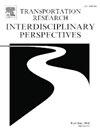From social media to policy: Public insights on transport communication and services in Queensland
IF 3.9
Q2 TRANSPORTATION
Transportation Research Interdisciplinary Perspectives
Pub Date : 2025-01-01
DOI:10.1016/j.trip.2025.101324
引用次数: 0
Abstract
This study seeks to understand public opinion related to transport communication and services by delving into citizens’ insights highlighted in online posts. Public perceptions of transport communication and services is fundamental to developing more efficient, inclusive, and user-centered transportation. The objective was to reveal how Queenslanders perceive transportation communication and associated services within the broader digital discourse. It explores the accessibility of current communication platforms and channels employed by the Queensland Department of Transport and Main Roads (Australia), with focus on public perceptions of transportation communication and services. A Netnography approach was used to analyze public comments from social and digital media to decipher prevailing sentiments and topics. Seven key themes in public discussions were identified: energy, disability, government funding, expansion of transport infrastructure, digital technology, health and safety, and quality of service. Among these ‘digital technology’ and ‘quality of service’ are directly related to communication, representing the use of digital tools to provide access to key transport-related information and the level of satisfaction with public transportation services. Despite generally positive attitudes towards transportation in Queensland, the study highlights a significant opportunity to enhance communication strategies and services to improve overall user experience, making transportation systems more user-friendly and accessible. The findings offer a consolidated understanding of the strengths and weaknesses of current transportation services and communication strategies across Queensland from the public’s perspective. Hence, transportation authorities can make informed decisions that reflect community priorities, needs, and desires, leading to improved service provision and develop effective and sustainable transportation solutions.
求助全文
约1分钟内获得全文
求助全文
来源期刊

Transportation Research Interdisciplinary Perspectives
Engineering-Automotive Engineering
CiteScore
12.90
自引率
0.00%
发文量
185
审稿时长
22 weeks
 求助内容:
求助内容: 应助结果提醒方式:
应助结果提醒方式:


